Pasta Primavera or “Spring Pasta” highlights tender spring vegetables-asparagus, peas, leeks and pea shoots, tossed with pappardelle, lemon zest, olive oil and spring herbs. Add a little yogurt to make it creamy if you like!
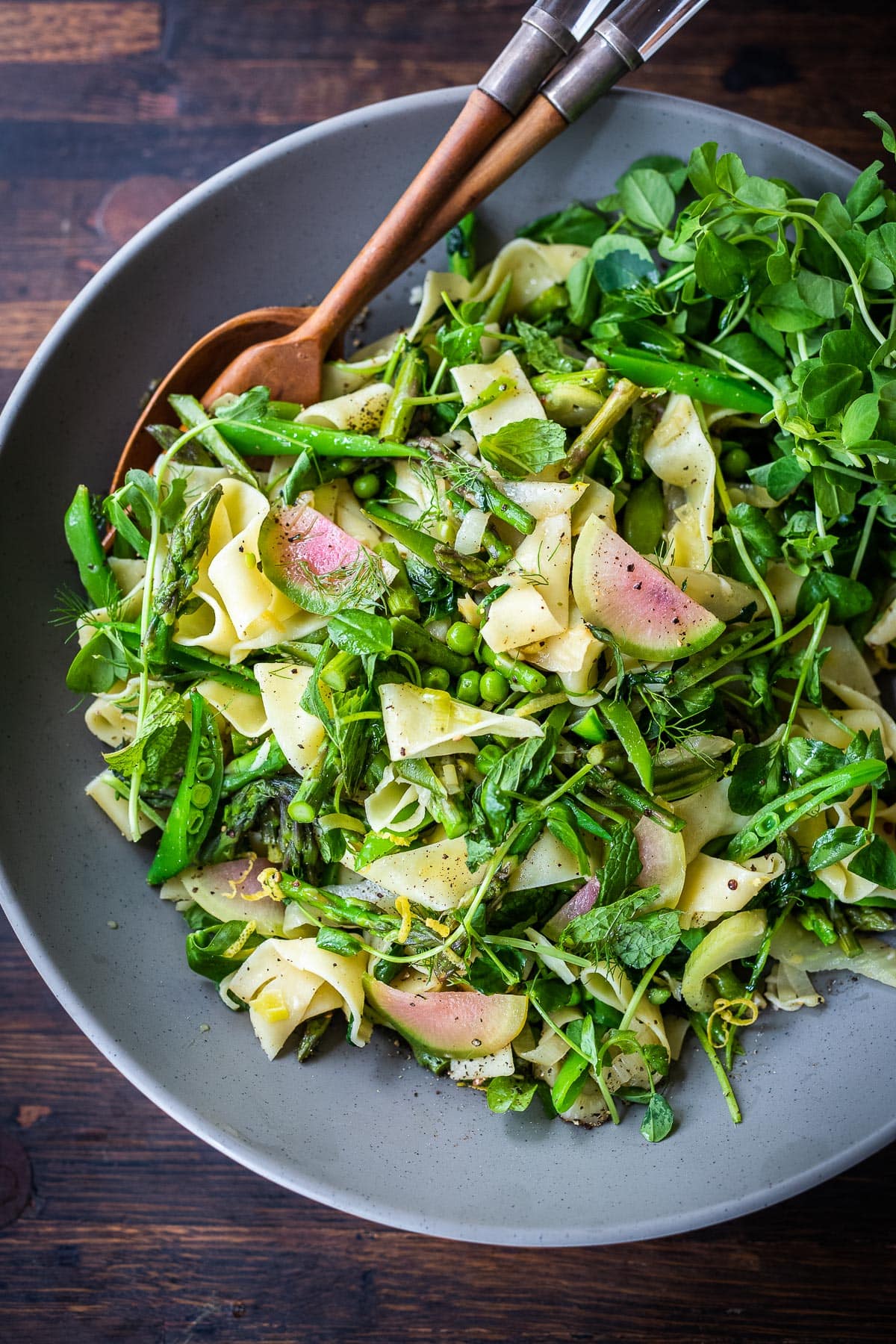
In the 80s, if you were a vegetarian and went out to eat, there was a good chance that Pasta Primavera was the only option on the menu. Back then, it often came out heavy and stoggy with only a few random veggies. I truly felt bad for my vegetarian friends! Perhaps it’s one of the reasons we started a vegetarian restaurant, now that I think about it!
This bright, zesty Pasta Primavera recipe is wonderfully light! We leave out the cream. Using just olive oil or a little plain yogurt adds a slight creaminess without being overly heavy. Lemon zest brightens it up.
And using “true spring veggies” (asparagus, peas, and leeks) is a beautiful way to celebrate this spring season!
One reader, Lynn, says: Omg! Excellent pasta primavera recipe, bursting with spring flavors. I used both tarragon and the mint and felt the mint gave the dish a lovely finish. Thank you for a great recipe! ⭐️⭐️⭐️⭐️⭐️
What is Pasta Primavera?
In Italian, Pasta Primavera means Spring Pasta, but contrary to popular belief, this pasta dish was created in Canada in the 70s and made popular in NYC. Pasta Primavera typically features pasta and veggies in a light cream sauce. Here we made a few changes to lighten things up a bit.
Pasta Primavera Recipe Ingredients
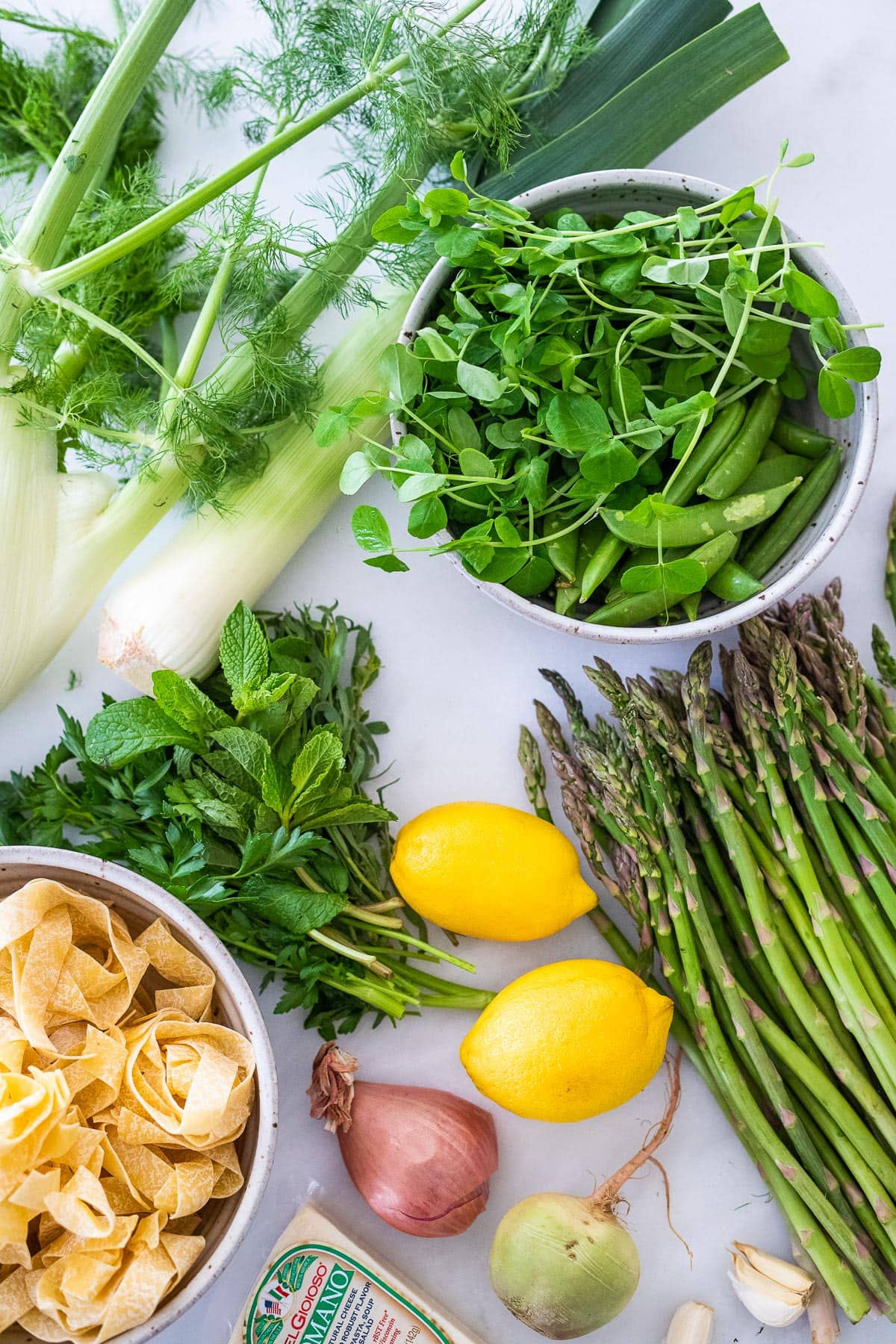
Ingredient Notes
- Pasta- Use any pasta you prefer. Here I’m using pappardelle, but tagliatelle, fettuccine, linguini, or even short pasta like penne or bow tie would work great.
- Veggies– Any quick-cooking veggies you like. Here we’ve primarily used spring veggies; asparagus, snap peas, fennel, leeks, and pea shoots. But fiddleheads, broccoli, red bell pepper, carrot ribbons, and zucchini are fine additions. Feel free to add cherry or grape tomatoes.
- Cheese: Pecorino gives the best flavor, but feel free to sub-parmesan or vegan parmesan.
- Lemon Zest- adds a delicious a pop of brightness.
- Onions/Leeks/Garlic- We use leeks and garlic, but feel free to sub onion, spring onions, or shallots. Garlic is a must!
- Pea shoots- Optional, but a great way to introduce yourself to this tender and nutritious spring green!
- Herbs- Using a combination of fresh herbs is nice here. Tarragon, mint or dill paired with fresh Italian parsley.
- Olive oil or yogurt- Drizzle the final dish with olive oil, or Greek yogurt for extra creaminess.
Chef’s Tips
- Use more veggies than pasta! Like in most pasta dishes in this blog, we switch the ratios. More veggies, less pasta.
- Salt the pasta water, because you’ll use it to season the “sauce”. A good rule of thumb is: 1 teaspoon salt to 1-quart water.
- To make this vegan, leave out the cheese and add a generous drizzle of olive oil at the end. Or try a vegan parmesan.
How to make the Best Pasta Primavera
Set salted water to boil for the pasta. Add 1 teaspoon of salt for every quart of water.
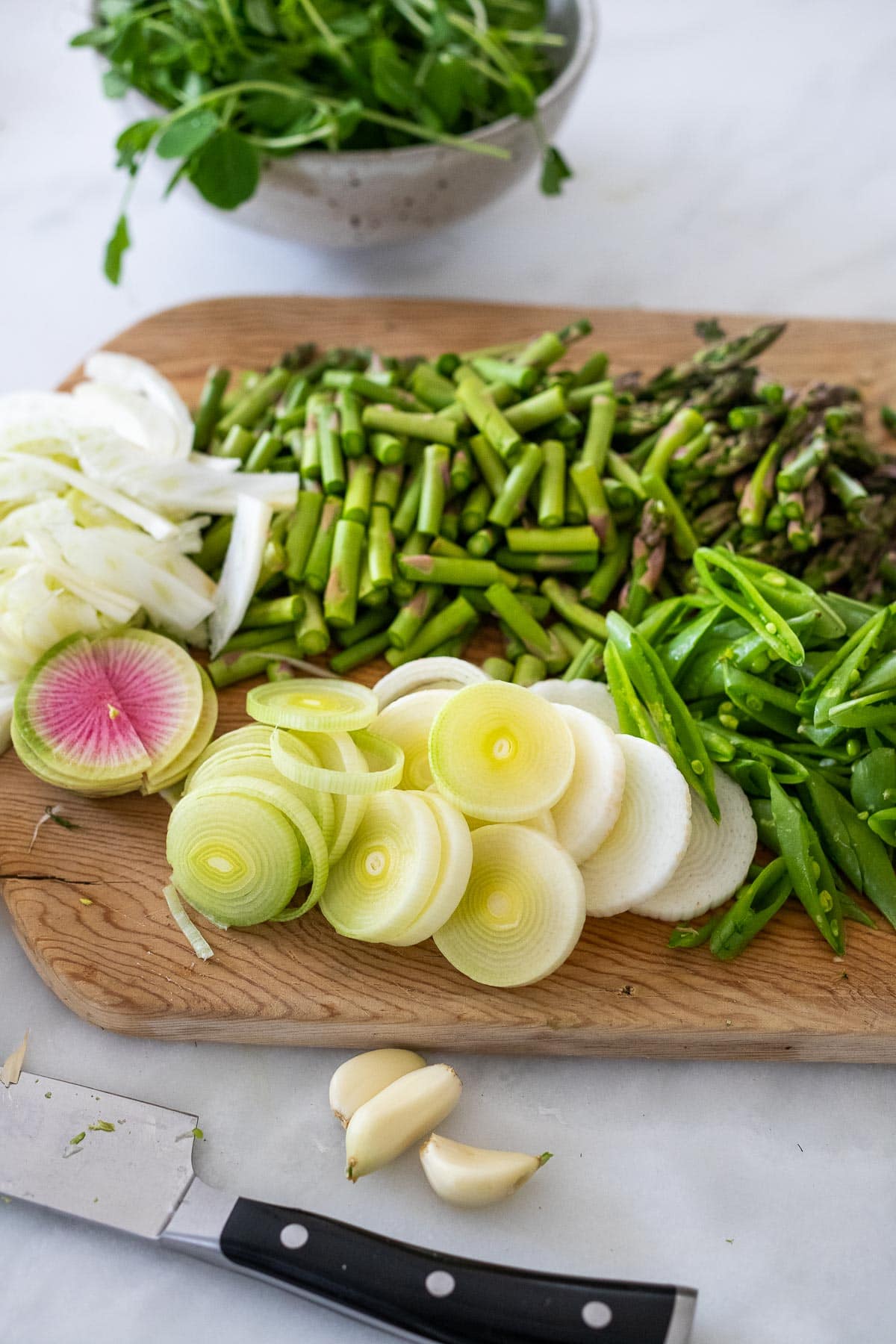
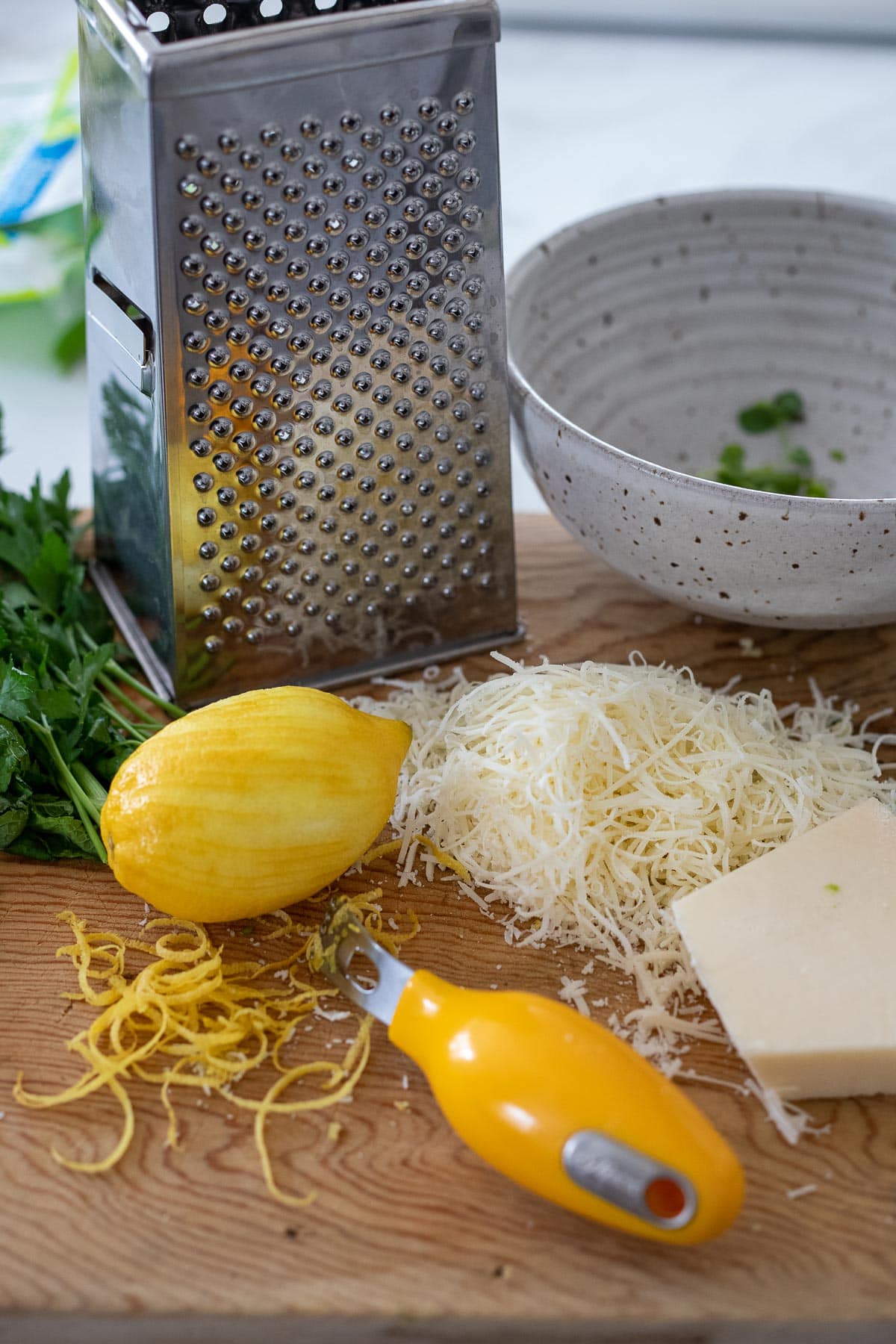
Prep the veggies, cheese and lemon zest.
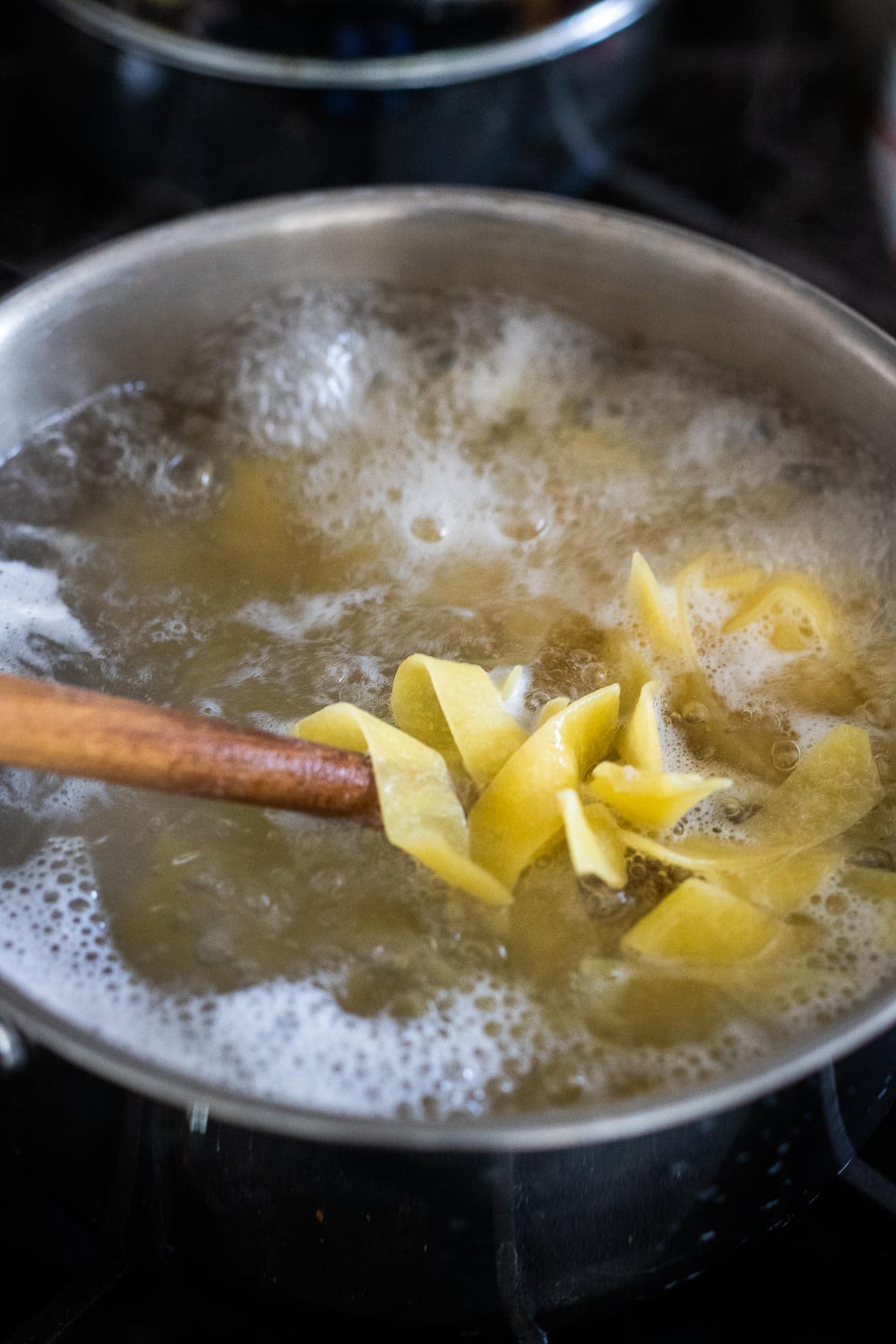
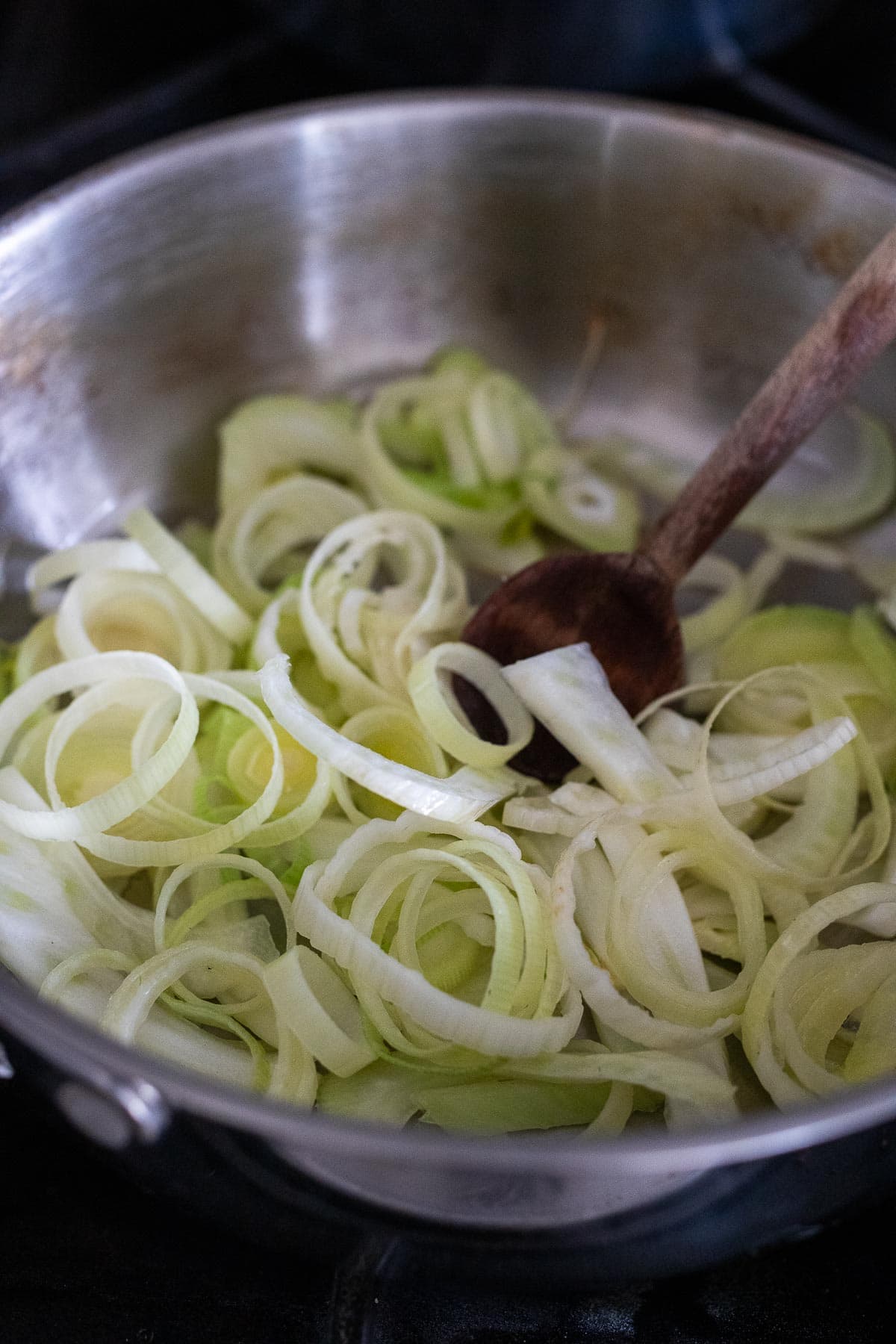
Cook pasta to al dente and, at the same time, begin sauteeing the veggies.
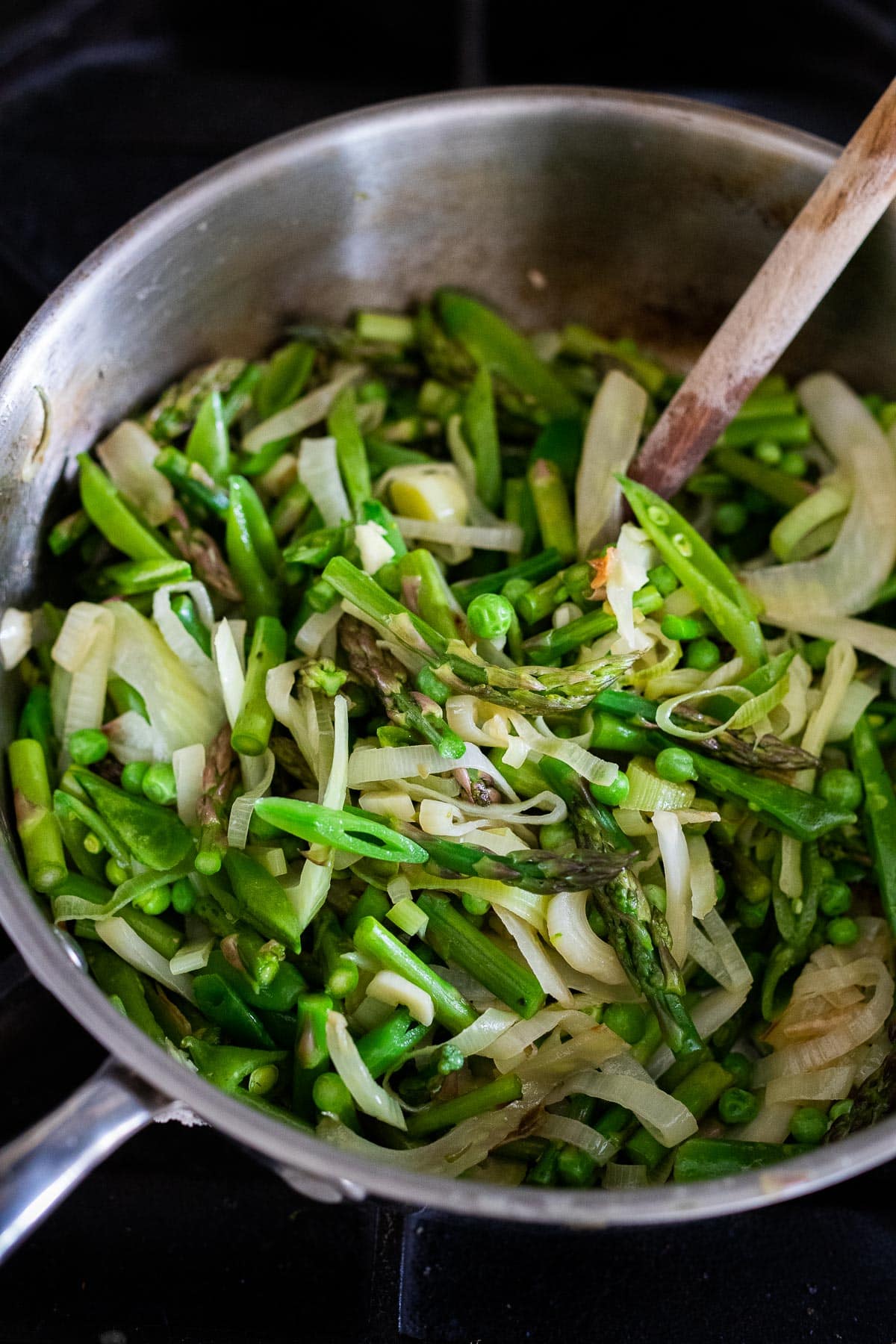
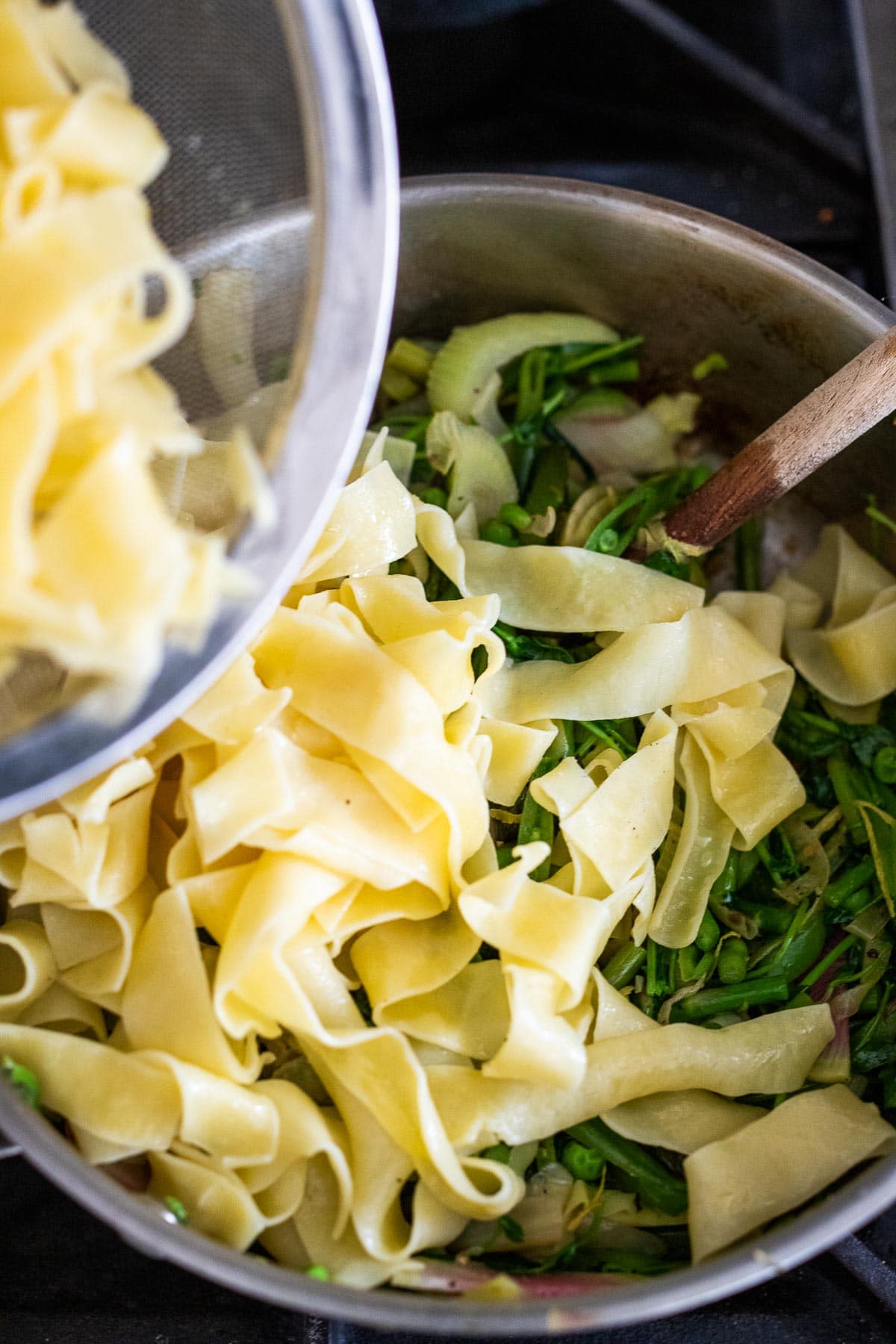
Saute the veggies until tender-crisp and season with salt and pepper. Toss in the pasta, fresh herbs and pecorino.
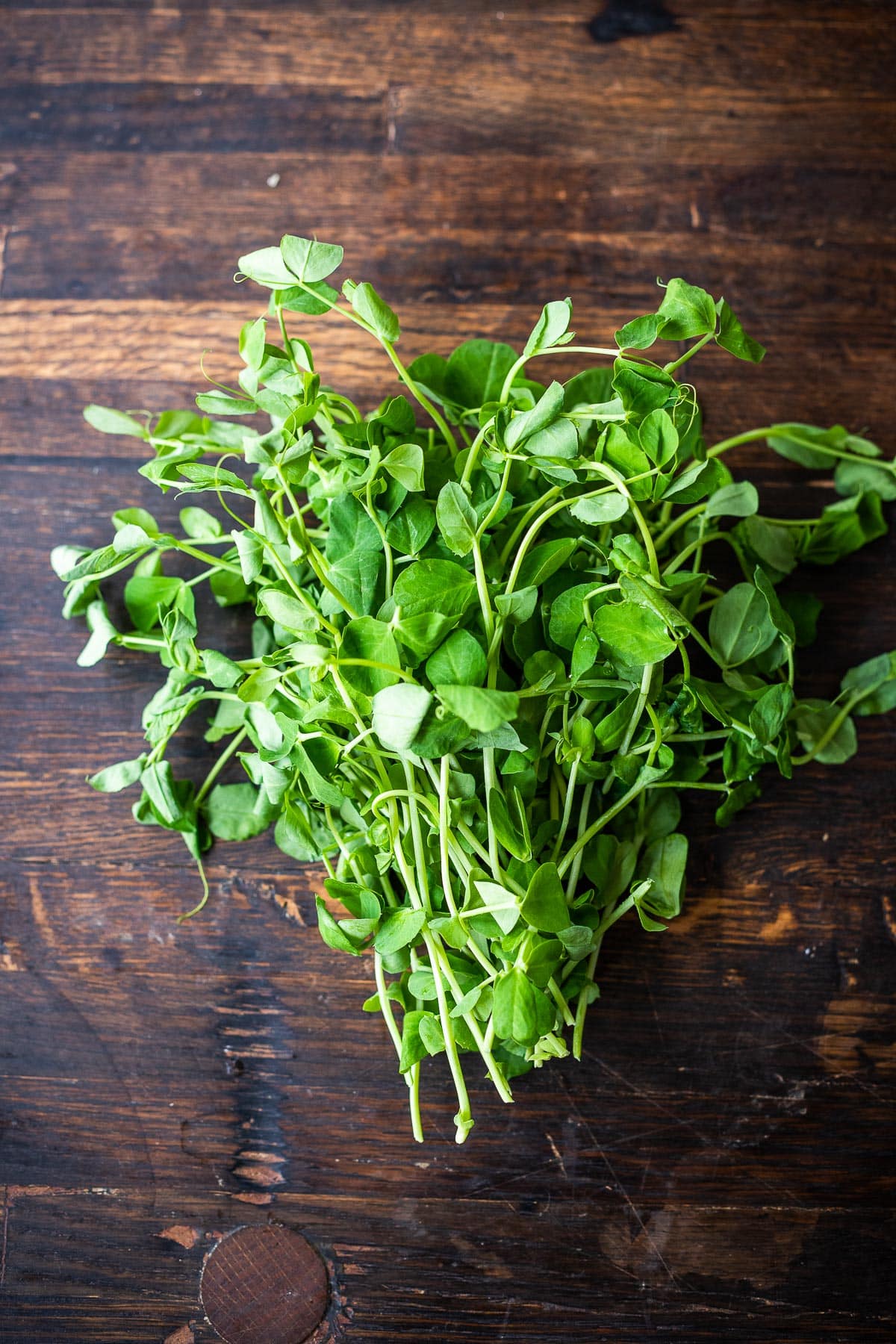
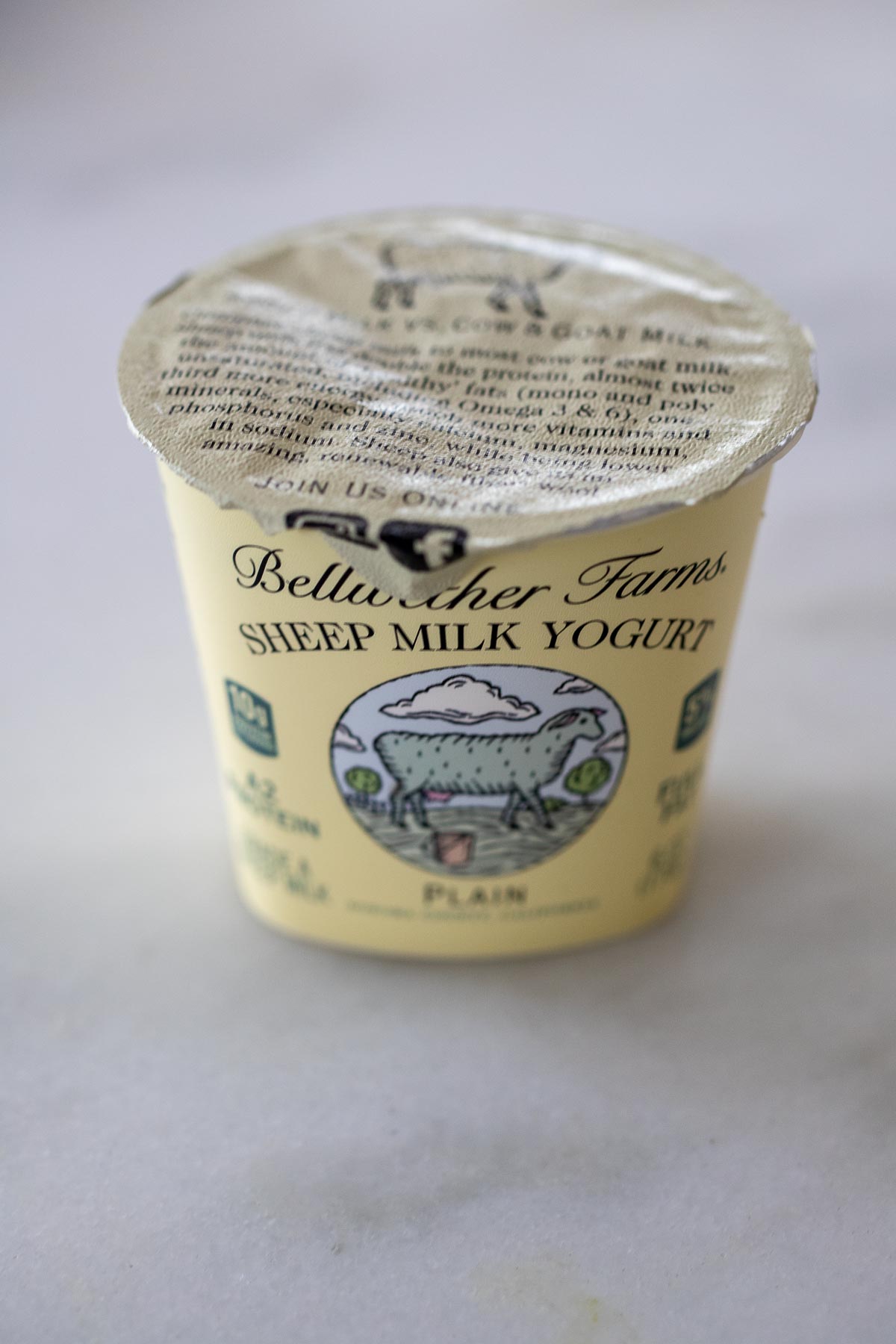
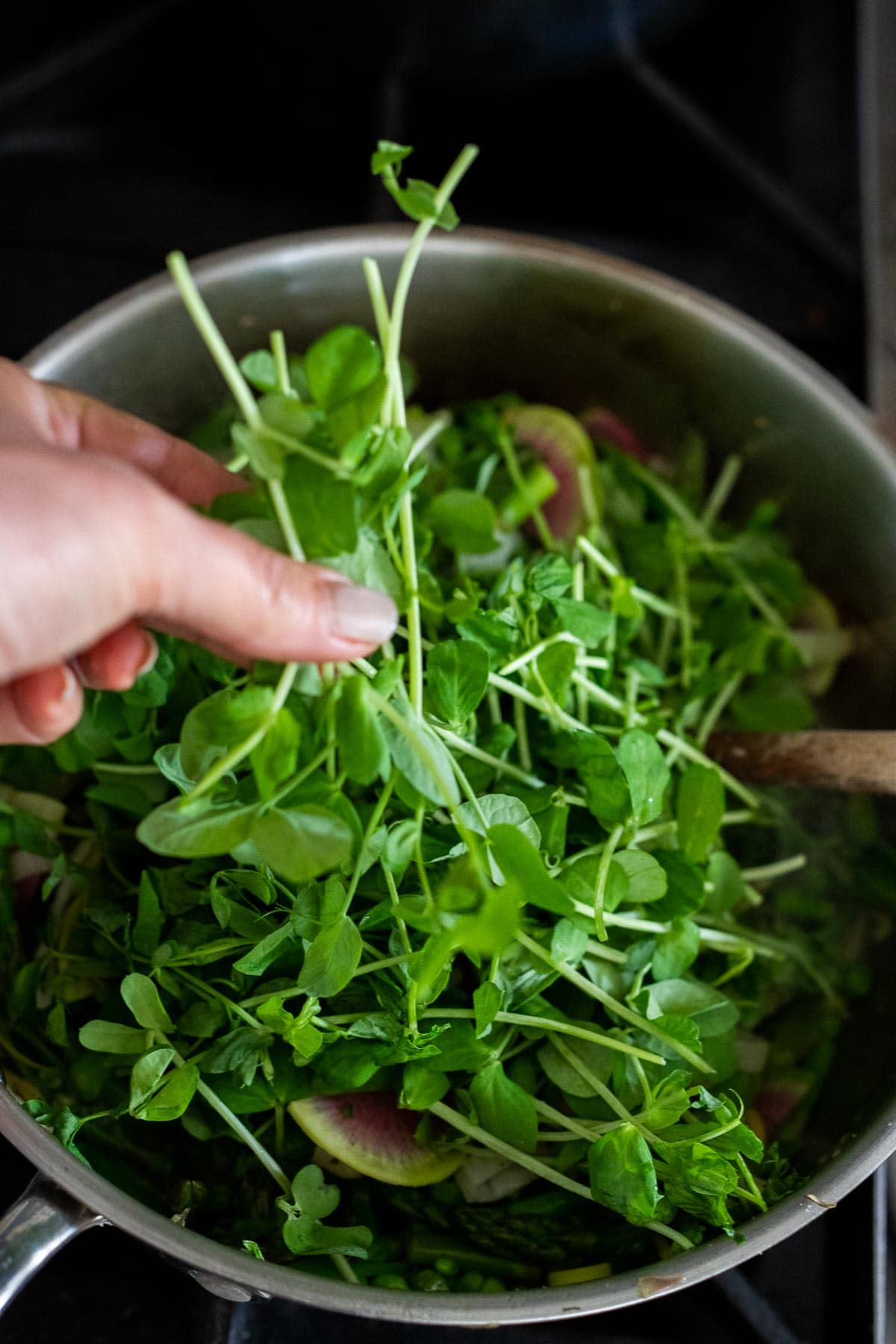
Toss pea shoots into the warm pasta, to gently wilt it. If you like a creamy pasta, stir in a a little full-fat yogurt. Add warm pasta water to loosen. I’ve been loving this sheep’s milk yogurt. Kefir will also work.
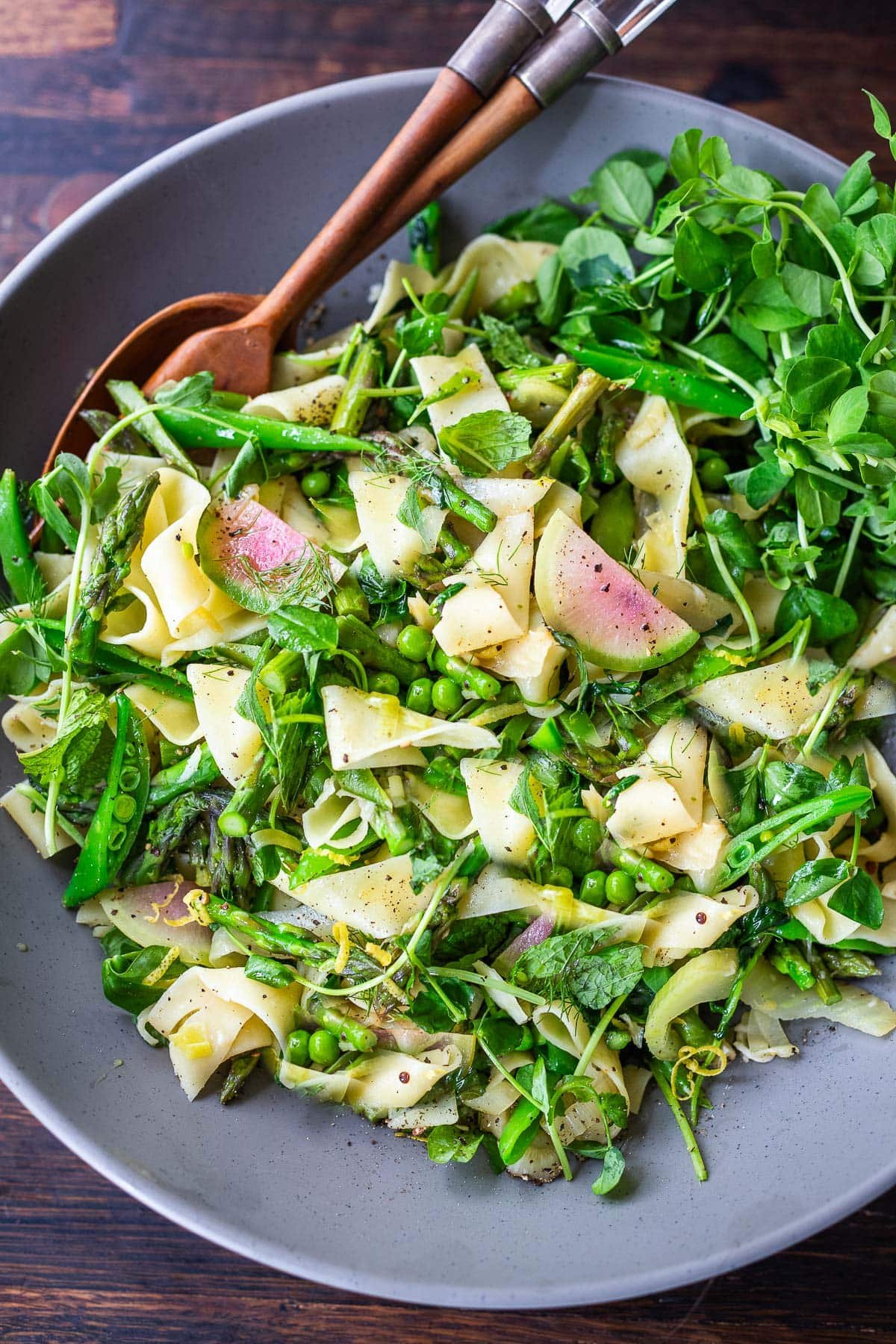
Taste and adjust salt and pepper. Serve on a platter and scatter with more herbs.
Storage
Store leftovers in an airtight container in the refrigerator for up to 4 days. Reheat gently on the stove in a saucepan or in the microwave. It’s also good cold.
What to Serve with Pasta Primavera
Pasta Primavera FAQs
In Italian, Pasta Primavera means “spring pasta.” Primavera translates to spring.
In the 80s, Pasta Primavera sauce consisted of parmesan, garlic and cream, although modern versions are foregoing the cream and instead replacing it with olive oil, creating a lighter meal.
Yes, forgo the cheese, add more garlic, olive oil, lemon and salt to taste. You could stir in vegan yogurt or vegan parmesan if you like.
More spring pasta recipes you may like
Please leave a comment and remember to rate it below. ⭐️ ⭐️ ⭐️ ⭐️ ⭐️ Thanks.
Print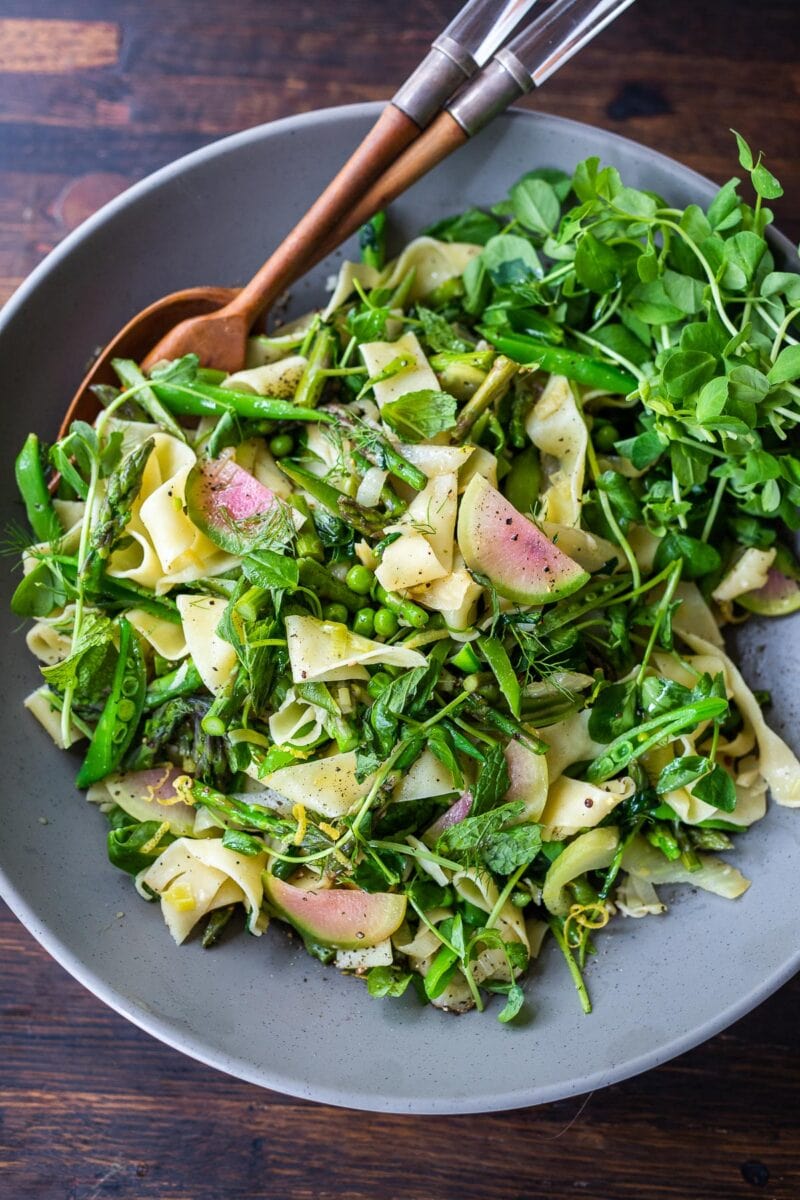
Pasta Primavera Recipe
- Prep Time: 15
- Cook Time: 20
- Total Time: 35 minutes
- Yield: 4-6
- Category: main, pasta
- Method: stovetop
- Cuisine: American
- Diet: Vegetarian
Description
Pasta Primavera or “Spring Pasta” highlights tender spring vegetables-asparagus, peas, leeks and pea shoots, tossed with pappardelle, lemon zest, olive oil and spring herbs.
Ingredients
- 6–8 ounces pasta- tagliatelle, fettuccine, pappardelle
- 2 tablespoons olive oil
- 1 leek, thinly sliced (or sub 2 shallots or one onion)
- 1 cup fennel bulb, thinly sliced, or sub other spring veggie- see notes
- 1 bunch asparagus, cut into 1 1/2-inch slices (about 3 cups)
- 2 cups snap peas, cut in 1/2 or 1/3rds at a diagonal legnthwise (or sub frozen peas, english peas or edamame)
- 4 cloves garlic, minced
- salt and pepper to taste
- zest from one lemon
- optional additions: big handful of pea shoots, 1 watermelon radish
- 1 tablespoon tarragon, mint, or dill, more to taste!
- 1/4–1/2 cup fresh Italian parsley
- 1/2–2/3 cup grated pecorino– or sub parmesan or vegan parmesan
- Optional : 1/4-1/2 Greek yogurt (or plain kefir) for added creaminess or a drizzle of good olive oil.
Instructions
- Cook pasta: Set salted water to boil for pasta – 2 quarts water with 2 teaspoons salt, and boil pasta until al dente, saving one cup of hot salted pasta water.
- Saute Veggies: In an EXTRA-LARGE saute pan, heat oil over medium-low heat. Saute onion and fennel, until softened, add asparagus, snow peas (see notes for substitutions) and garlic, season with salt and pepper and continue to saute until tender-crisp and bright green. Slightly under cooking is better than overcooking here. 🙂
- Combine: Add the pasta, lemon zest, cheese, pea shoots and watermelon radish, and a little pasta water to loosen it, tossing to coat the pasta, heating it up gently, allowing the cheese to incorporate. Toss in 2/3rds of the herbs. Taste and add more salt as needed. Add a generous drizzle of good olive oil or added creaminess, toss in some plain yogurt- start with 1/2 cup, more as desired.
- Taste once more, adjusting salt and pepper. If it is bland, it needs more salt.
- Pour it onto a serving platter and scatter with the remaining herbs. Enjoy!
Notes
Veggies: You’ll need roughly 6 cups of veggies, including the onion. Other veggies will work too- broccoli, green beans, mushrooms, bell pepper, zucchini, etc. Frozen peas or edamame can be tossed in with the pasta for the last minute of cooking to thaw.
Nutrition
- Serving Size: 1 ½ cups (with pecorino & yogurt)
- Calories: 400
- Sugar: 8.6 g
- Sodium: 507.4 mg
- Fat: 16.1 g
- Saturated Fat: 4.3 g
- Carbohydrates: 49.6 g
- Fiber: 6 g
- Protein: 16.8 g
- Cholesterol: 11.8 mg
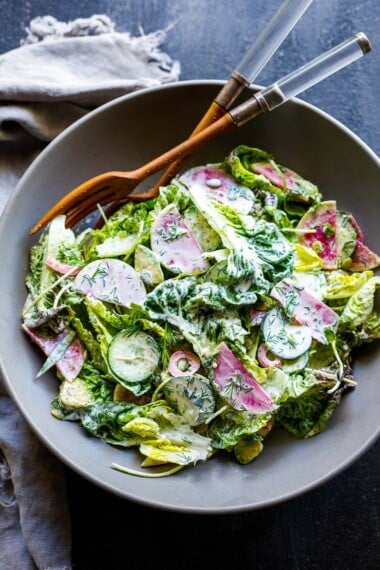
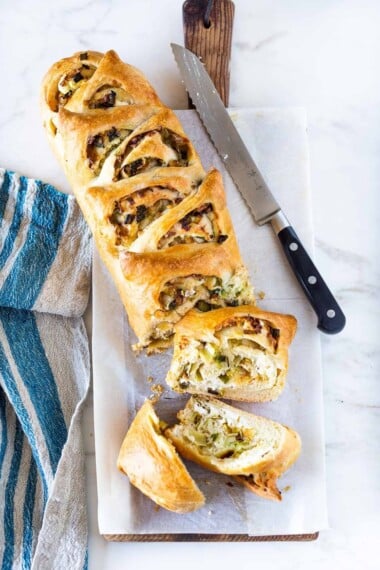

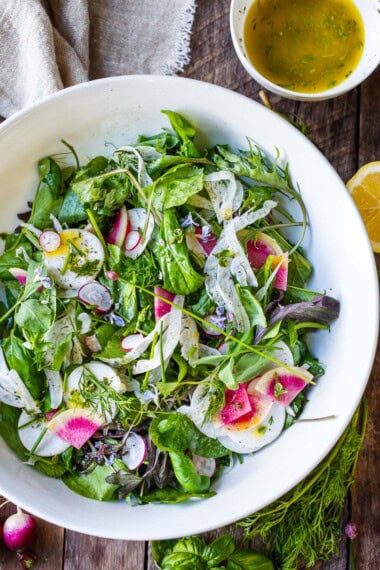
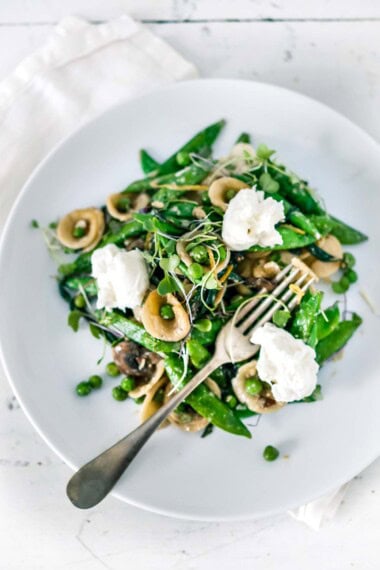
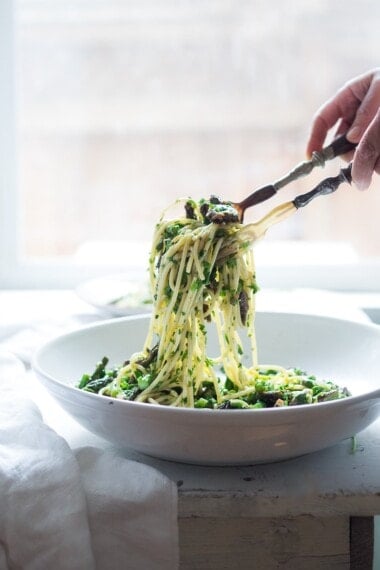
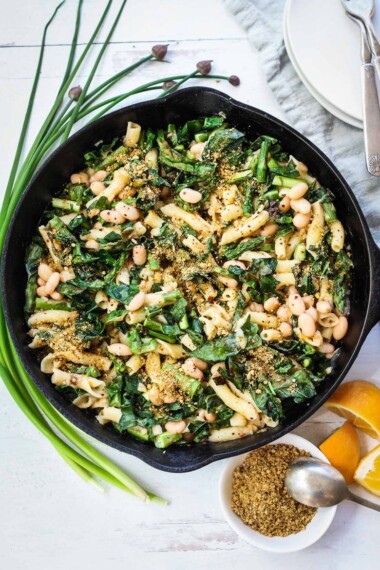
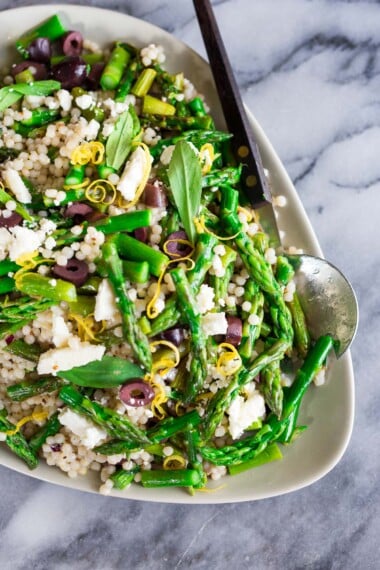
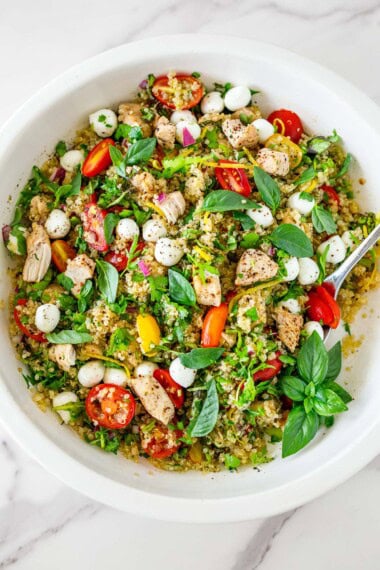
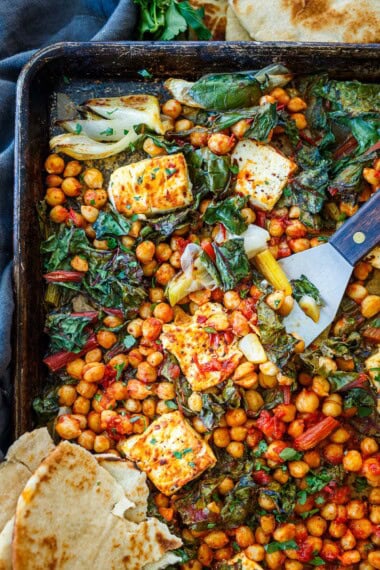
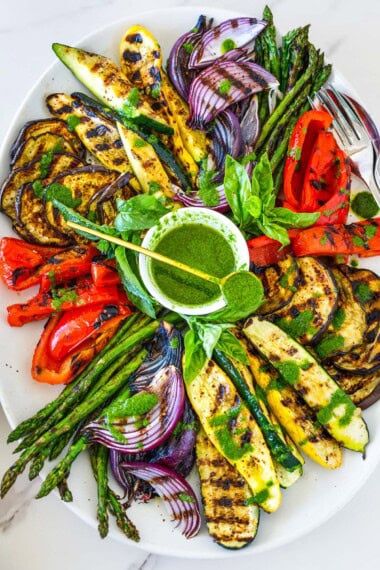

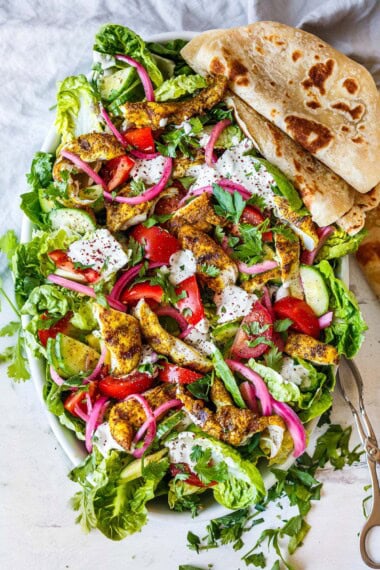

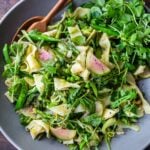
Omg! Excellent pasta primavera recipe, bursting with spring flavors. I used both tarragon and the mint and felt the mint gave the dish a lovely finish. Thank you for a great recipe!
Great to hear Lynne! love the mint addition- so fresh!
Another great recipe! I didn’t add the yogurt, and opted for the good olive oil drizzle. I bought pecorino cheese for this dish, and wow it’s delicious. I like how this pasta dish is light, healthy, and showcases spring’s beautiful veggies and herbs.
Great to hear Jenna! So happy you gave this a go!